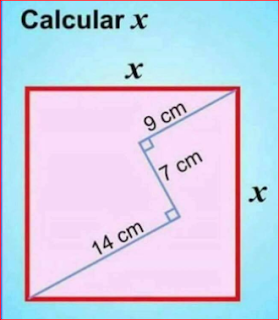Simple to simplify?
This is a lovely question that I was emailed by brilliant.org
If you haven't seen that site then do go there. I suggest signing up for the free access and having fun exploring some of their frankly brilliant problems.
This one involves some nice techniques and will allow you to delve into different A-level maths ideas.
If you haven't seen that site then do go there. I suggest signing up for the free access and having fun exploring some of their frankly brilliant problems.
This one involves some nice techniques and will allow you to delve into different A-level maths ideas.





What a problem this is. Use substitution or it's impossible
ReplyDeleteSo i used a substitution and this is what i did:
ReplyDeletex=2^20 and y=2^10
LHS: the numerator becomes (2^20)^2 -2(2^20) +1, which becomes x^2 -2x +1, which becomes (x-1)^2
the denominator becomes (2^10)^2 +2(2^10) +1, which becomes y^2+2y+1, which becomes (y+1)^2
since there is a square root we can square root the numerator and denominator so it becomes that (x-1)/(y+1) = 2^a -1
or
(2^20 -1)/(2^10 +1) = 2^a -1
then we can use the substitution n=2^10, so:
((2^10)^2 -1)/(2^10 +1)=2^a -1
n^2 -1/n+1 = 2^a-1
(n+1)(n-1)/(n+1)=2^a -1
cancelling gives:
n-1=2^a -1
n=2^a
2^10 = 2^a
so a=10
problem solved!
I like Anne-Marie's reasoning and explanation (and the fact that Joe had clearly solved it but didn't post an answer so others could enjoy the problem too).
DeleteWhat do you think to the following method for solving it?
On the LHS, look at the numerator. Compared to 4^20 everything else is absolutely tiny, so the numerator is ~ 4^20.
The denominator is ~2^20.
4^20 divided by 2^20 = 2^20. The square root of this is 2^10.
So: the LHS is approximately equal to 2^10 (and is very close to this). On the RHS the -1 is negligible compared to 2^10, so a = 10
Is this a decent/reasonable explanation?